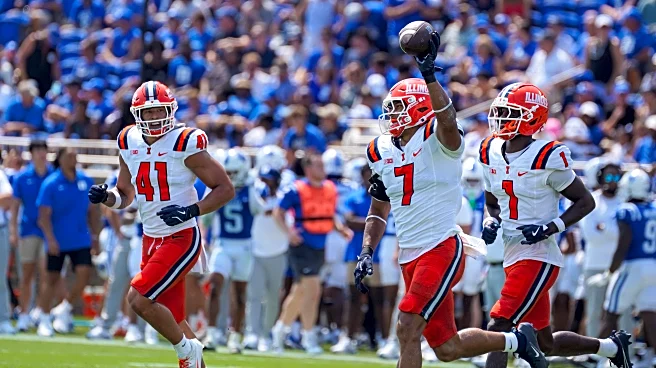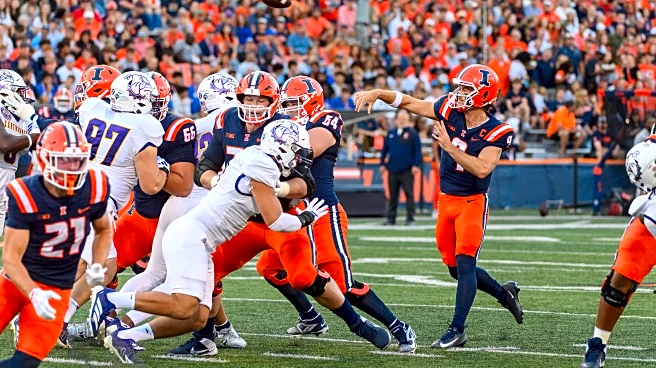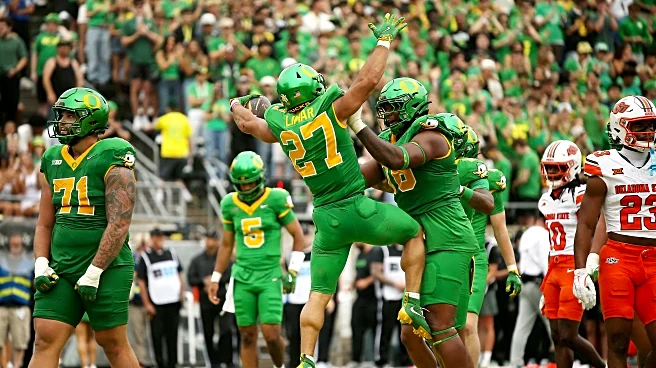What's Happening?
Illinois' football stadium has been renamed Gies Memorial Stadium after alumnus and philanthropist Larry Gies donated $100 million to the school's athletic department. This donation is the largest in the history of the athletic program. Larry Gies, founder and CEO of Madison Industries, made the gift in memory of his late father, Larry Gies Sr., a United States Army veteran. The stadium, originally named to honor U.S. armed services members, is now a tribute to Gies' father and all who have served. The Illini football program, under coach Bret Bielema, is currently ranked No. 9 in the AP Top 25, marking its highest ranking since 2001.
Why It's Important?
The renaming of the stadium to Gies Memorial Stadium signifies a major financial boost for Illinois Athletics, potentially enhancing the university's sports programs and facilities. This substantial donation reflects Larry Gies' commitment to honoring military service and supporting educational institutions. The financial infusion could lead to improved resources for student-athletes and bolster the university's reputation in collegiate sports. The Illini's recent successes in football and basketball highlight the positive trajectory of the athletic department, which may attract further investments and elevate the university's standing in national sports rankings.
What's Next?
With the donation, Illinois Athletics may explore further development opportunities, including facility upgrades and expanded support for student-athletes. The university could leverage this financial boost to enhance recruitment efforts and strengthen its competitive edge in collegiate sports. As the Illini football team continues to perform well, maintaining its high ranking, the program may attract more attention and support from alumni and fans. The broader impact of this donation may also inspire other philanthropists to contribute to educational and athletic initiatives.
Beyond the Headlines
The renaming of the stadium underscores the cultural significance of honoring military service through public spaces. It reflects a growing trend of integrating philanthropy with educational and athletic development. This move may encourage other universities to seek similar partnerships with alumni and benefactors, fostering a culture of giving that supports both academic and extracurricular excellence. The long-term implications could include increased community engagement and a strengthened sense of identity and pride among students and alumni.













